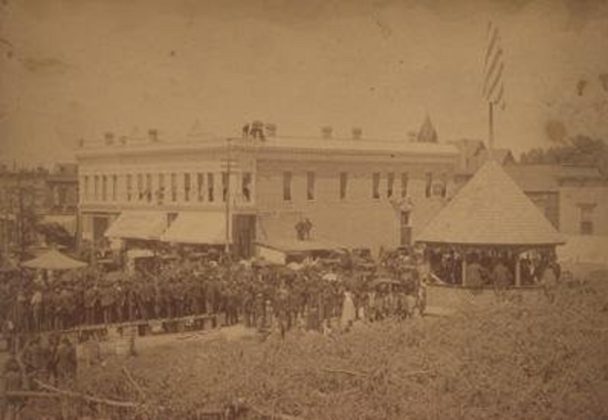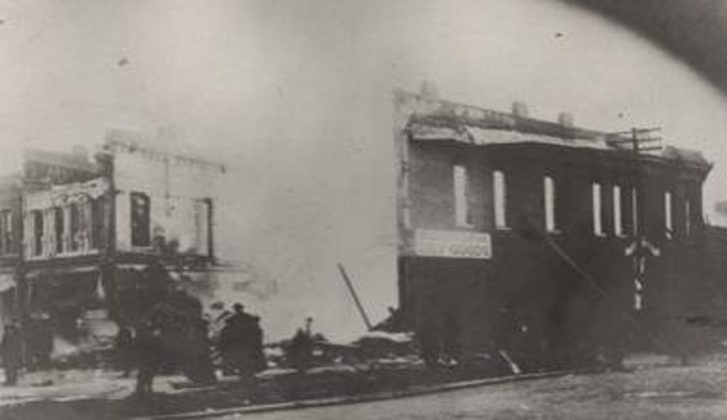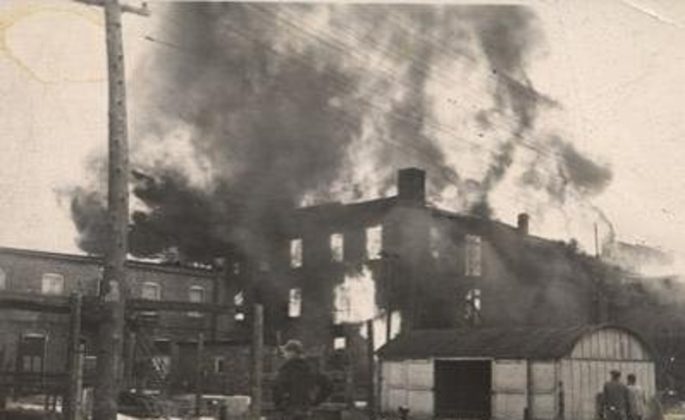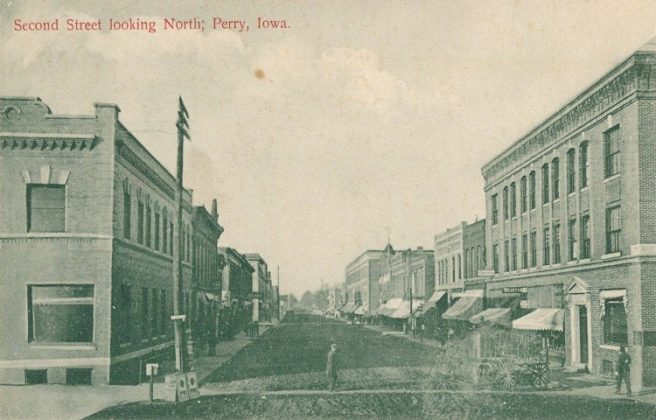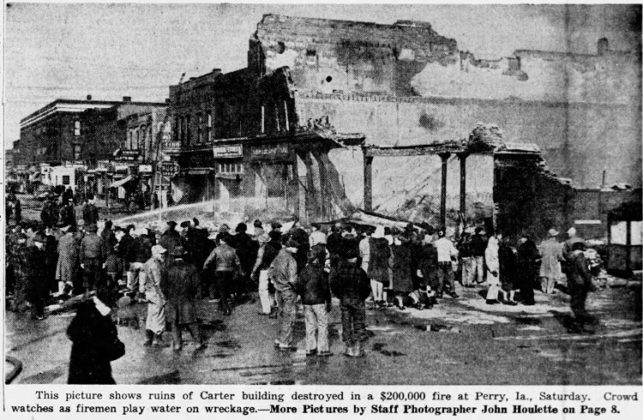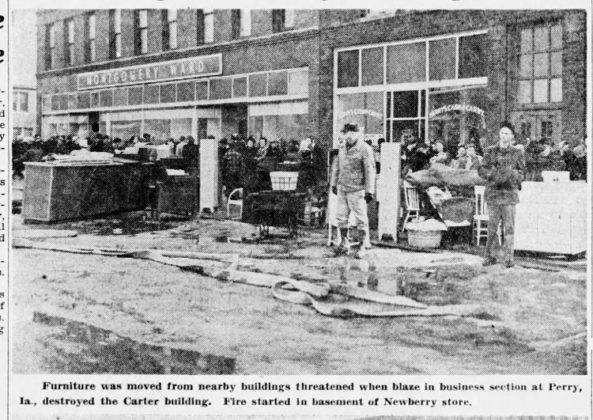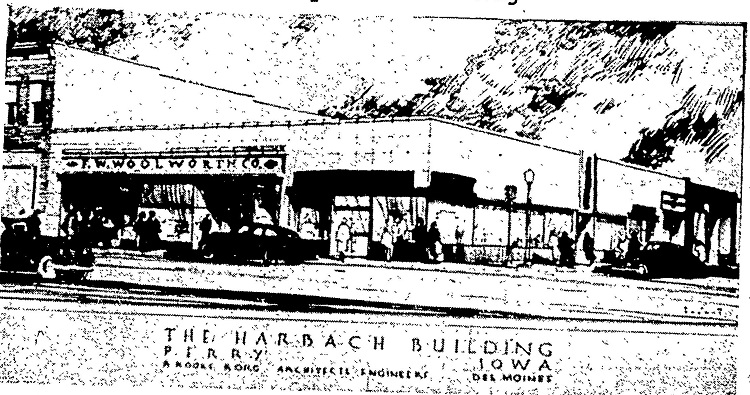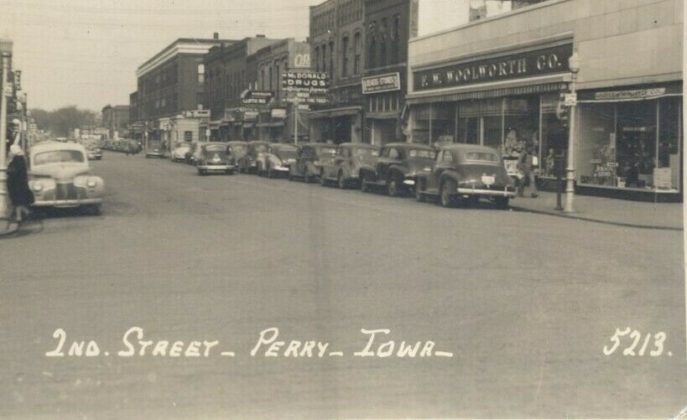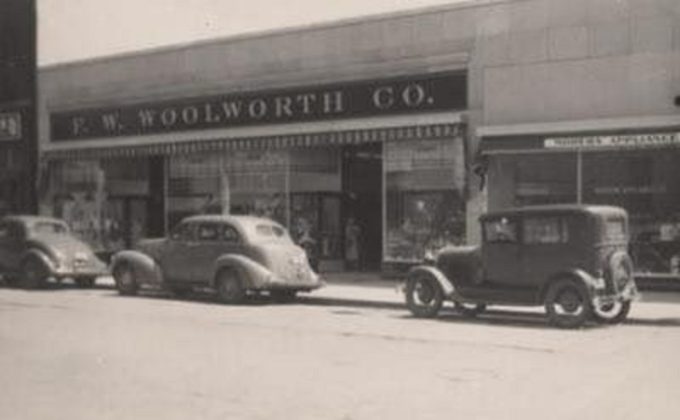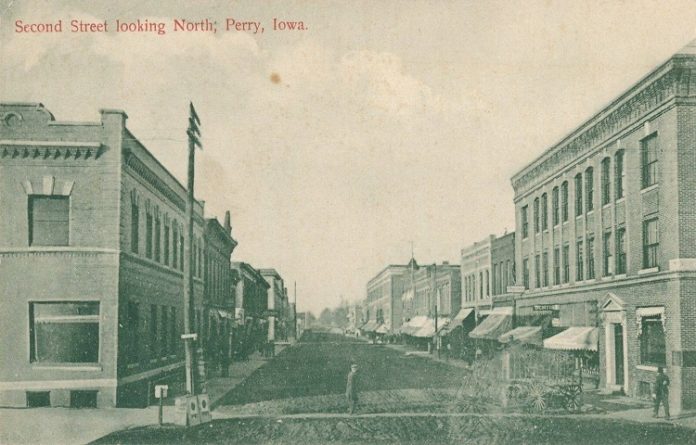
More than $50,000 worth of property went up in flames and smoke when the Clement block at Second Street and Willis Avenue burned to the ground in December 1906. The fire was the biggest Perry had seen since the great fire of 1898.
The fire was said to have started under a stairway between the Buckley and Golden Rule stores in a new gas lighting plant that had just been installed there. For weeks acetylene gas was leaking from the plant, and it was believed to have caused a small explosion and started the fire. A fire wall next to the Clement block saved the fire from burning the buildings to the north.
Upstairs were the offices of Dr. R. E. Doidge, who lost everything but some of his emergency surgical instruments. The dental office of Dr. Harter was a total loss, and the photographer L. M. Stoops lost his entire outfit, valued at $1,500, plus $75 in bank notes.
One of the fire’s greatest casualties was that of Ori Howell, who was a piano tuner living in the building. Over the years, Howell put together the finest private library in Perry, including a collection of curios from all over the world.
At the time of the fire, John Clement was living in Ontatio, Calif., on an orange grove, and by April 1907 he sold the Clement corner to Wimmer and William, and a new building was started. John Clement died in 1909.
In 1908 the Peoples Saving Bank moved in, using the corner room, and in 1913, with F. M. Thomas as agent, E. D. Carter bought the building for $60,000 and renamed it the Carter block. Heavy withdrawals of more than $200,000 caused the bank to close Sept. 21, 1925.
Carter and his wife were in California and drove back to Perry to face an indictment passed down by the grand jury on the closing of the bank. All in all, three Perry banks closed in 1925. The other two were the Security Saving and the Perry National.
The Newberry Co. bought out the Steel’s Consolidated store and opened up a new store. Then Woolworth opened an outlet in Perry, at that time one of the largest of the chain stores in Iowa.
In February 1945, a $200,000 fire destroyed the Carter building, with 22 families somehow escaping their third-floor apartments, saving only a few things. Mrs. Tom Navin, an invalid, was carried down by her two daughters.
It was said the fire was discovered at 12:45 p.m. in the waste room of the Newberry store by a Juanita Black, who was a cashier, and within two hours it gutted the Newberry and Woolworth stores, burning through the upstairs offices and apartments and collapsing three brick walls.
Fire equipment from Bouton, Minburn, Boone and Woodward came to help, but they found the blaze spreading fast when they arrived. At that time, the building was owned by the W. C. Harbach estate in Des Moines and was worth an estimated $60,000.
U.S. Army Air Corp 2nd Lt. James R. Haas, home on leave after 35 bombing missions over Europe, lost all he had in the destruction of the Carter block. Blanche Miner worker at the ordnance plant in Ankeny, and her sister, Ruth Bailey, got out just in time.
The Harbach estate put up a new building at the cost of $100,000, and on Oct. 18, 1946, Woolworth opened a new store. By December 1946, they held a grand opening for the Modern Appliance Co. on the south side of the store, owned by Jack Traverse of Perry. Later occupants included Conklin’s Jewelry and Schitiling’s Town and Country as well as the Woolworth store.






